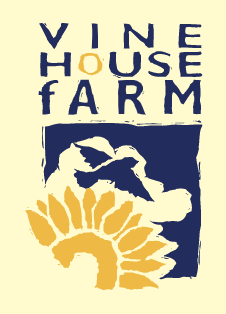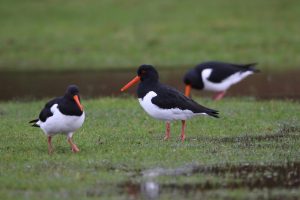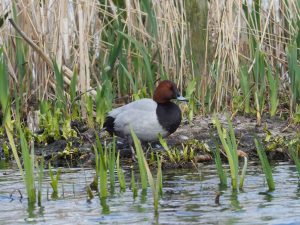
October itself hasn’t broken any rainfall records with 101mm/3.97ins. Three other Octobers in the last 50 years were over 100mm in 1987, 2001 and 2002. The rainfall we have had during the past five months has broken records, starting in June with 145mm/5.7ins, July – 75mm/2.95ins, August – 76mm/2.99ins and September – 86mm/3.38ins. This is a total of 483mm/19ins, compared to our total annual rainfall of 531mm/21ins. No doubt some of you are thinking what is all the fuss about as we regularly get four or five inches of rain a month. The problem is that our land is full of water and we have been trying to lift potatoes and sugar beet and drill wheat. Our drainage board has been coping very well and pumped all the excess water out to sea. Our biggest threat of flooding however, is if the River Welland should overflow but that has not reached anywhere near a crisis level either.

Potatoes are our biggest worry. We have lifted two thirds of them, but if the weather continues wet we will not be able to lift them all. If it was to stop raining for three weeks, we could get them all lifted – 80 acres left to lift at 10 acres a day only means eight more days of lifting. When the going is good, we can lift more than 10 acres per day as we have invested in a three row potato harvester. It is proving a good investment, it is a lot simpler than our last harvester, breakdowns are repaired more quickly and it will work in wetter conditions. The new harvester is made by Standens of Ely. The previous one made by Grimme, from Germany.
Wheat that we should be sowing now is another worry. Again, if it would only stop raining for three weeks we would get most of it sown. Wheat comprises nearly half of our acreage, so it is a very important crop to us and we have all the seed dressed ready to sow. We really do need three weeks dry weather.
There has been one good result from this soggy October – we have had a good crop of sunflowers; in fact we have had a good crop two years running. Does that mean we have finally mastered the art of growing a good crop of sunflowers after 20 years of growing them? Pigeons are our biggest enemy for damaging the crop, with Stock Doves a close second. Stock Doves are smaller than Wood Pigeons; they have no white on them and are a bit darker. This means they are not as noticeable as Wood Pigeons, they tend to drop in near the outside of the field and walk about very quickly looking for emerging sunflowers. Pheasants and Partridges also creep into the field and they too like an emerging sunflower. When they find an emerging plant, they take the top of it. This means that is the end of that plant.
When a sunflower germinates it pushes a root down and the seed is forced up splitting into two, to form the cotyledons. Most plants when germinating put a shoot down and put a shoot up, the seed stays where it was sown and so if the top is taken off, there is enough energy in the seed to send another shoot up.
To counter all this outside activity, we covered the outside 12 metres with fleece, giving us a full plant around the outside. We sowed the crop ten days later than recommended, as the soil was a bit warmer and the sunflowers emerged more quickly. The crop didn’t need to be protected for so long as, once the cotyledons opened up, the pigeons ignored them until they had flowered and the seeds in the head were edible.


It is sad to see the Swallows disappear, but as they say when one door closes another one opens. We must then be looking for the Fieldfares and Redwings to arrive. I usually see Fieldfares first, but this year Redwings have been arriving before the Fieldfares, our hedges are full of berries for them. Fieldfares arrived during the last three days of October – busily scoffing hawthorn berries. Every winter we get Redwings and Fieldfares, but we don’t get Bramblings every winter. In a mild autumn, when the winds keep blowing from the South West we get very few of them, as who in their right mind would want to fly across the North Sea headwind?
Barn Owls would have done better if we’d had a calmer October, as the wind and the rain must have made hunting on several nights very difficult for them. However, despite the weather, they have done extremely well, with only 2014 being a better year in the last 20 years. We started off with seven second broods in the nest boxes on the farm, all with four or five youngsters, except one that had only two. We have ended up with one brood of five in the nest box with the camera. We gave them some day old chicks and mice on three occasions to help them out.
We have been cleaning all our nest boxes out. Tree Sparrows do fill them right up to the top by the time they have had three or four broods. We have also started feeding round the farm, which will continue all through the winter.
I have seen three flocks of Whooper Swans flying south and one flock of 12, in a field with three youngsters. Those youngsters will stay with their parents until they arrive back on their breeding grounds next spring. This is quite different to the young Cuckoos, which never see their real parents and manage their migration on their own. They stop off to fatten up in the right places before making the flight across the Mediterranean and the Sahara desert. Every species have their own different strategies.
Stonechats must have had quite a good year as I have been seeing pairs and singles quite often on the farm during October. They are a bird that can have up to three broods a year if the summer goes their way.
Autumn is the time when rats and mice are moving around looking for a source of food, we regularly catch mice in our house at this time of year. If you get rats around your feeders, you could hang a plastic bucket under your feeders to catch anything that drops from them. You may have a feeder tray but some of the seeds will get blown off the tray when birds take off. Bringing the feeders in at night will also help, as rats are very good climbers. I wouldn’t recommend stopping feeding – Rutland Water did that when they had rats and now all of their Tree Sparrows have disappeared. If you stop feeding you may lose all your birds.
TALKS & EVENTS
13st November – Doncaster RSPB
2nd December – Sheffield Wildlife Trusts
Winter Bird Watches at Vine House Farm
Saturday 18th January
Saturday 1st February
Tickets £7 – available here



